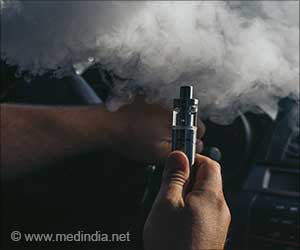Millions of e-cigarette users or vapers across the globe are celebrating World Vape Day on 30 May 2020, a day before World No Tobacco Day.

The number of vapers globally has been increasing rapidly from about seven million in 2011 to 41 million in 2018, according to Euromonitor International. The market research group estimates that the number of adult vapers worldwide will reach almost 55 million by 2021. In its 2018 independent evidence review, Public Health England (PHE) concluded that “e-cigarettes are around 95% safer than combustible cigarettes.”
Published in March 2020, the agency’s latest report stated that, “Despite reductions in smoking prevalence, smoking remains the biggest single cause of preventable death and disease and a leading cause of health inequalities. So, alternative nicotine delivery devices that are less harmful could play a crucial role in reducing this health burden.”
The harms associated with secondhand smoke from combustible cigarettes have been clearly established, but these do not apply to e-cigarettes and “secondhand vapor”, according to Peter Paul Dator, president of The Vapers Philippines. “Unlike tobacco cigarettes, e-cigarettes do not burn organic matter at very high temperatures and therefore do not produce toxic fumes.
The main components of the liquid used in e-cigarettes are propylene glycol and glycerin, accounting for 95% of the e-liquid. The remaining components are water, nicotine, and flavorings.” Dator cited a study done by the California Department of Public Health that showed that emissions from e-cigarettes utilizing flavored nicotine e-liquid are no different from the air that we breathe walking down the street.
The use of alcohol, tobacco and other drugs (ATOD) is a common cause of many preventable deaths and diseases in Australia, according to Stephanie Thuesen, Director of Stakeholder Engagement at The Progressive Public Health Alliance. “Creating policy based on a harm reduction model will benefit the ATOD and mental health sectors exponentially. Therefore, we have recommended to the Australian government to legalize and regulate reduced-harm products in ATOD such as vaping and snus and invest in harm reduction measures, outreach services and rehabilitation centers.
Advertisements
Every day, 80,000 to 100,000 young people around the world become addicted to tobacco, according to the World Health Organization (WHO). If current trends continue, the WHO predicts that 250 million children and young people alive today will die from tobacco-related diseases.
Advertisements
Concerns that vaping may appeal to youth or may serve as a ‘gateway’ to smoking are inconsistent with the evidence, according to Jagannath Sarangapani, Director of the Association of Vapers India (AVI). “E-cigarettes have been gateways out of smoking for millions and have been accompanied by declining youth smoking rates. Instead of banning them, governments should regulate e-cigarettes to maximize the benefits of low-risk alternatives while minimizing the likelihood they will be used by youth or non-smokers. Bans serve only to protect the cigarette industry.”
Source-Medindia








